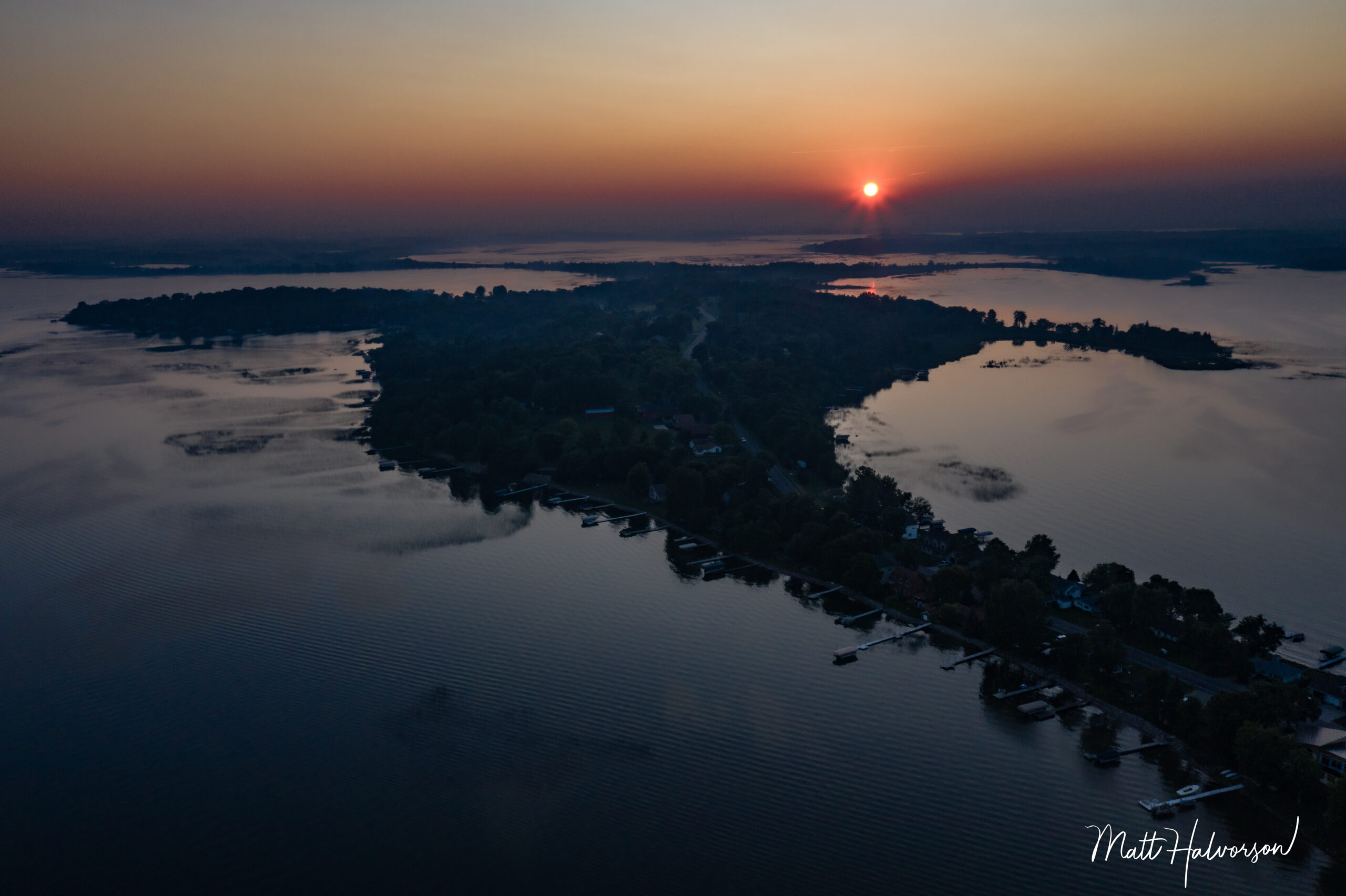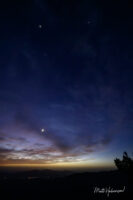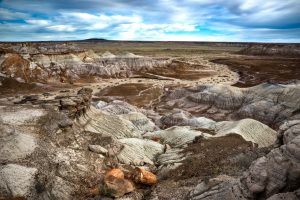My Day at Lake Lida: What I Learned Photographing Minnesota’s Waterfowl
Lake Lida is one of the many beautiful lakes in Minnesota and is one of the larger lakes in the area. I have been there several times now and I have used both my Nikon D810 with a Tamron 150-600mm lens and my new Z8 with a Nikkor 180-600mm. I was excited when my new lens came in and I wanted to try my had at waterfowl photography on the lake with it. The trip exceeded every expectation. As expected the new setup offered much sharper and easier tracking of the birds.
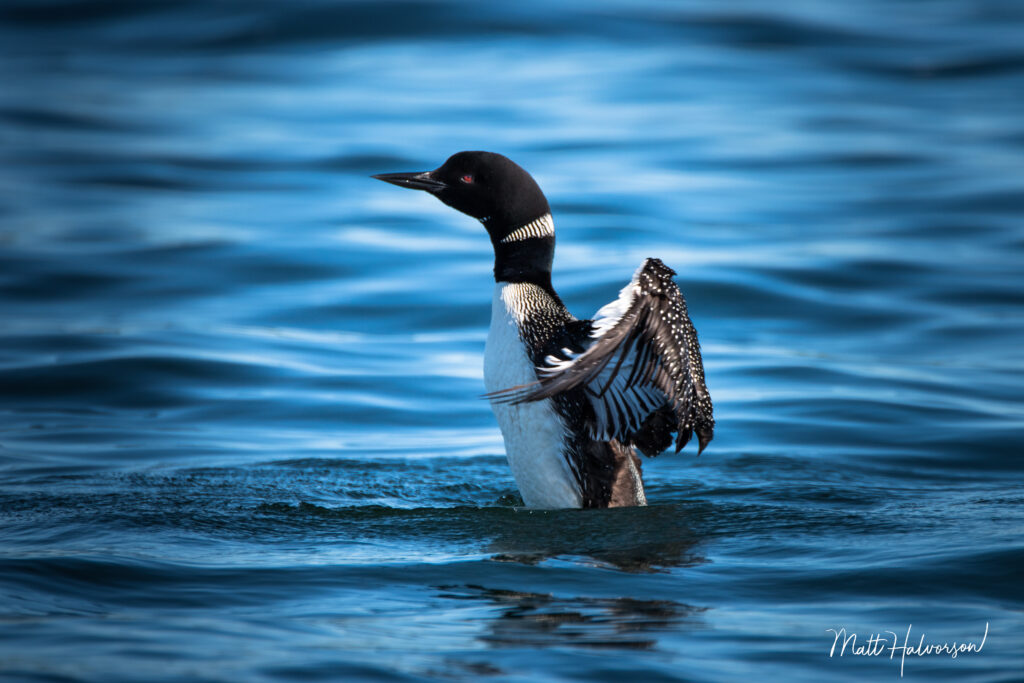
Shot with my D810 and Tamron 150-600mm
A Masterclass in Patience: Great Blue Herons

Shot with my Z8 and Nikkor 180-600mm
My day began with what I thought would be a quick warm-up session photographing some distant birds. Then a Great Blue Heron landed on the dock in front of me. Watching it stand there so still felt like stepping into a meditation class. This bird embodied patience in a way that honestly humbled me as a photographer. It stood motionless on the dock above the shallow water, eyes fixed waiting for a fish to get to show itself never moving an inch.
I learned to match its patience. Every time I thought about moving to get a “better angle,” I reminded myself that the best wildlife photography comes from letting the animal’s behavior dictate the shot, not my impatience. I learned from a previous time photographing herons that they can also be very skittish animals and moving will often cause them to fly off.
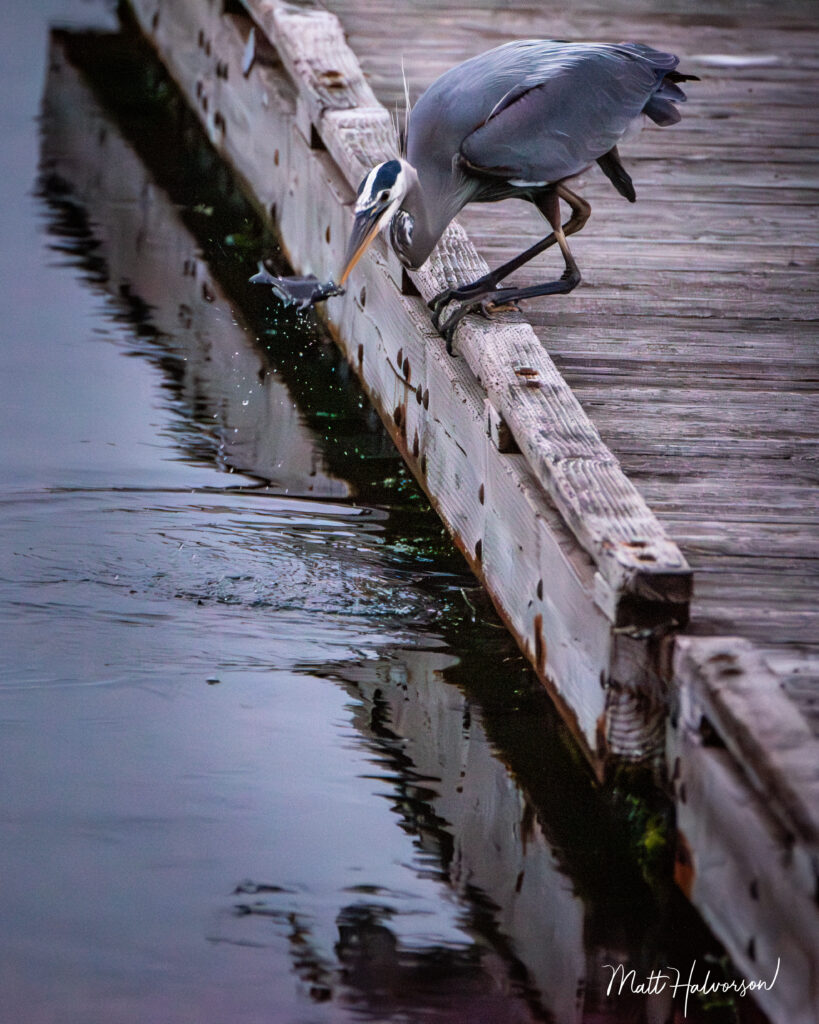
Shot with my Z8 and Nikkor 180-600mm
When the a heron finally strikes, it will be explosive—a lightning-fast spear into the water that may be over before you press the shutter button and process what happened. From my previous time photographing herons fishing (Catching Dinner) I kept my camera ready with continuous shooting mode. This time at Lake Lida the heron was not able to see any fish below the dock so it took flight to fine a new spot.
My Heron Photography Lessons:
- Subtle body language tells you everything: a slight lean forward, a barely perceptible head tilt
- The strike happens so fast that pre-focusing and burst mode are essential
- Their amber eyes are incredibly expressive and should be tack sharp in every shot
Settings for the Great Blue Heron:
- For standing still you can use a lower ISO and slow shutter
- For flying or hunting shots use a high ISO 720, and shutters faster than 1/600s
- Bump the shutter to 1/2000s or more when you sensed a strike is coming
- For flight you can probably get away with a shutter of 1/600s but be sure to pan in the direction of flight and continue the panning even after you press the shutter button.
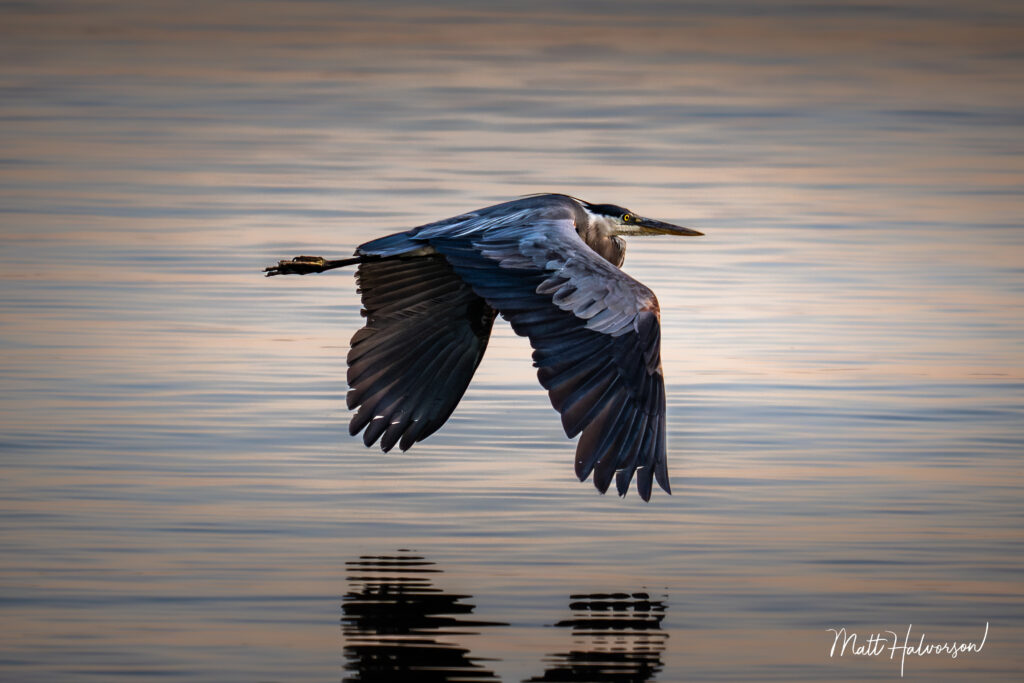
Shot with my Z8 and Nikkor 180-600mm
The Gentle Mallard Families
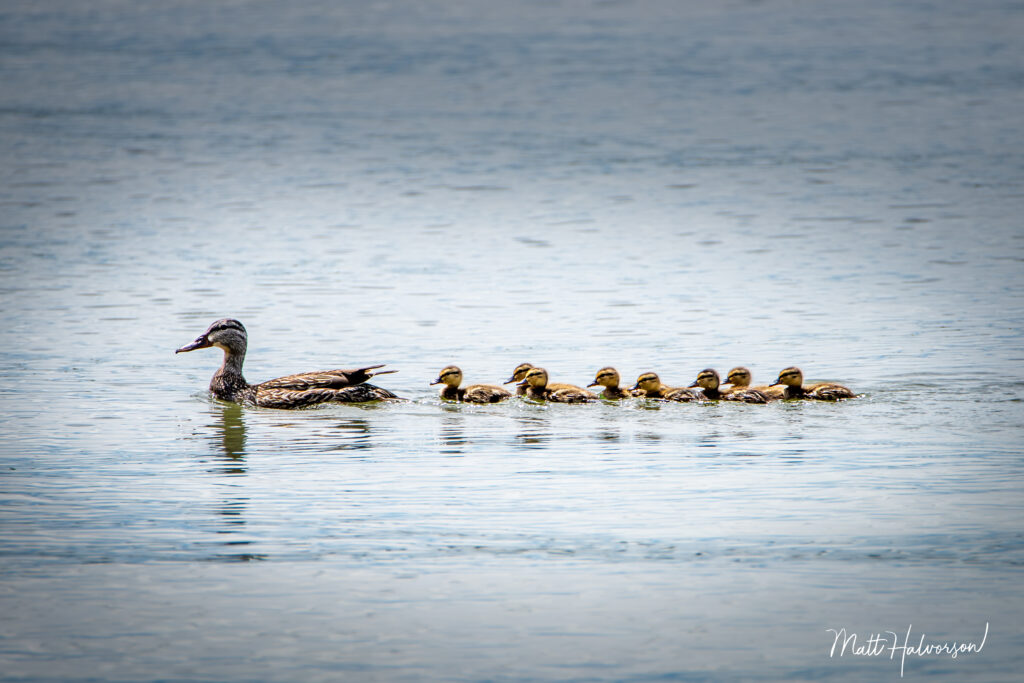
Shot with my D810 and Tamron 150-600mm
What surprised me most about the mallard ducks at Lake Lida was their behavior around their ducklings. Unlike the dramatically still hunting displays of the herons or the protective back-carrying of the Mergansers, the mallard mother seemed to be running a floating daycare center.
She moved methodically through the shallow areas with eight tiny ducklings trailing behind her in a perfect line. Occasionally, one would venture off to investigate something interesting, but a soft quack from mom brought them back into formation. I watched this family dynamic for over an hour and realized I was witnessing a masterclass in gentle leadership. This is called imprinting. The ducklings watch their mother and learn from her actions.
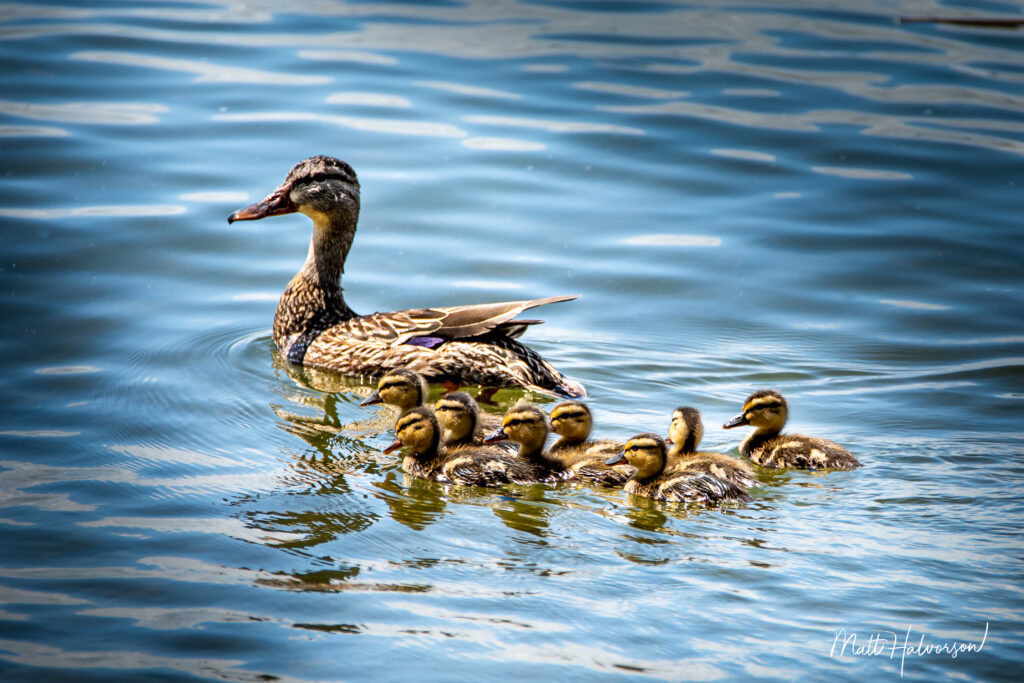
Shot with my Nikon D810 and a Tamron 150-600mm lens
The photography challenge here was different again—these chicks were smaller than the Heron and moved unpredictably, and the chicks were constantly moving around in unexpected directions. I learned to widen my auto-focus and use a larger f-stop to keep a larger area in focus. I also relied on the camera’s animal detection more than with the larger, more predictable species.
Common Mergansers: The Surprise Education
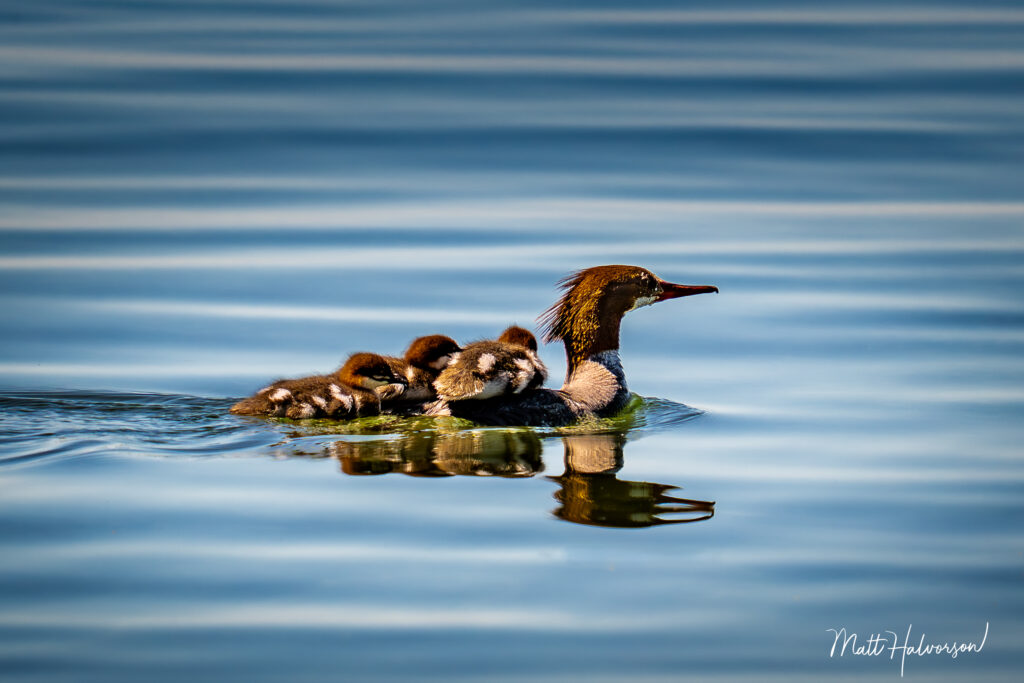
Shot with my Z8 and Nikkor 180-600mm
I’ll admit, I wasn’t familiar with Common Mergansers before this trip. When I first saw a female with three chicks riding on her back, I thought she was some kind of duck I couldn’t identify. It wasn’t until I got home and started processing images that I realized what I’d captured.
The merganser family provided some of my favorite shots of the day. I was able to capture some fun images of a behavior I learned is called back-brooding. This isn’t just transportation; it’s protection from predators above and also lurking beneath the surface as well as a way to regulate the chicks’ body temperature. Some of the fish below can be large enough to pray on baby chicks. The mother merganser seemed to offer her back as both transportation and a launching platform. I watched the chicks hop on and off as they practiced diving swimming and dipping their heads in the water.
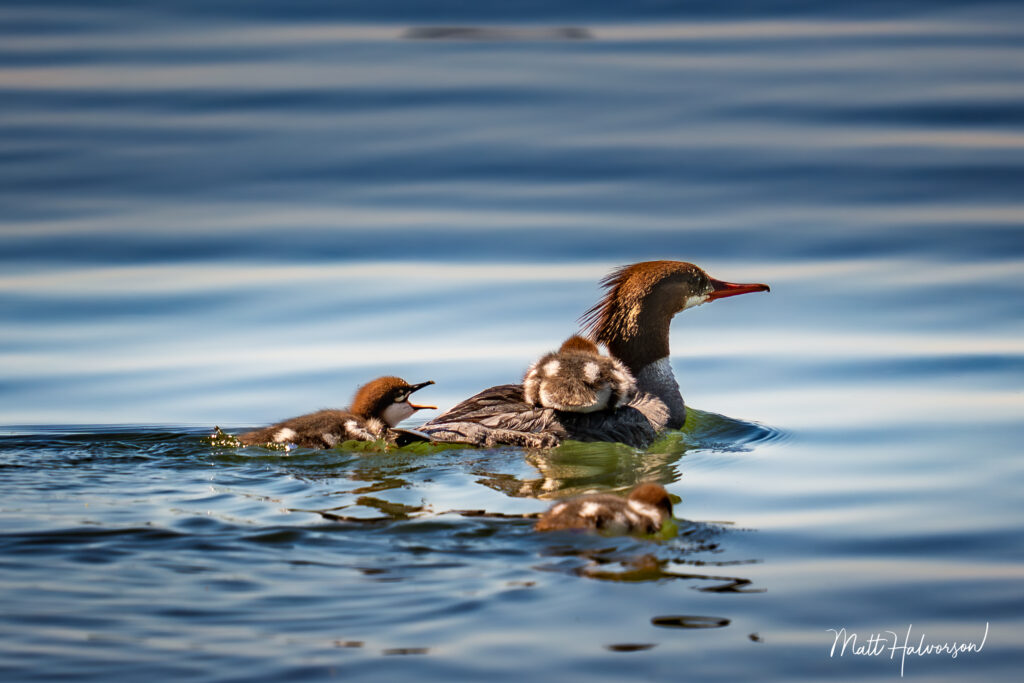
Shot with my Z8 and Nikkor 180-600mm
What I Learned About Mergansers:
- They’re diving ducks, unlike the mallards that dabble at the surface
- The female’s distinctive reddish-brown crested head makes for striking portraits
- They’re constantly in motion, making them excellent subjects for practicing tracking techniques
The Unexpected Stars: Loons and Their Chicks
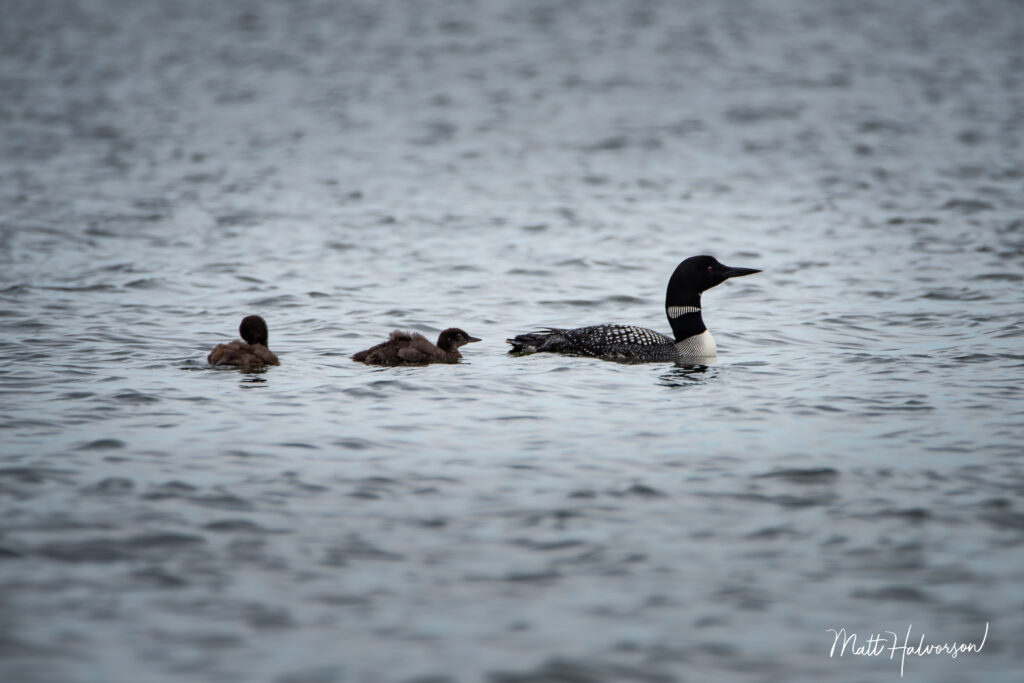
Shot with my Nikon D810 and a Tamron 150-600mm lens
One a separate day to Lida I was out trying to capture the eagles dive bombing the fish. Then a I spotted them—a pair of Common Loons with their chicks. Loons are the state bird of Minnesota and a protected species. They have a very unique call that can melt the heats of the people leaving around the lakes. I’d read about loons carrying their young on their backs, and I wish I was able to witness it firsthand like I did with the Mergansers but seeing the state bird with their chicks was a special treat anyway. Maybe next time.
The adult loon moved through the water with such grace while the tiny, fuzzy chicks swam safely behind. What struck me most was how only one parent would dive or be away from the chicks. The chicks are too young to dive at this point so at any given moment there was one parent watching over the chicks. The parents would take terns diving and feeding.

Shot with my Nikon D810 and a Tamron 150-600mm lens
Camera Settings I Used for the Loons:
- Zoomed close to 600mm for each image.
- ISO 800, f/6.3, 1/600s sometimes I used a faster shutter
- Continuous auto-focus tracking
The challenge with photographing loons became apparent quickly—they’re constantly moving, and their black and white plumage creates exposure challenges as the older cameras (such as my D810) focus easier with strong contrasts. This meant my camera would try to focus on their back rather than their head. Loons are fairly long birds so this would often put their head out of focus. I found changing my camera to auto-focus with a smaller amount of focus pints helped force the camera to focus on their head. This is where the new Nikon Z-series cameras excels. They contains new firmware settings specifically for photographing birds. Once I swapped to my Z8 with the bird focusing setting selected the camera did a great job locking onto the adult birds eye which helped keep my images sharp where I needed it.

Shot with my Nikon D810 and a Tamron 150-600mm lens
Unique information about loons. Loons differ from most other birds in that their bones are not hollow. Instead they are solid like ours. This makes them a very heavy bird and able to dive up to 250 feet and hold their breath for 5 minutes. They can also fly 75 mph and over 600 miles in a day. Their red eye helps them see while under water. Often when they come up from a deep dive they will stand up and flap their wings to splash off the excess water like the image above. You should also beware with this display because it is also used when they they are feeling threatened. If you are too close and causing them stress they may call out and or stand up flapping their wings. If this happens you should back off and give them some space.
Technical Lessons from a Full Day of Shooting
By the end of my Lake Lida session, my camera settings had evolved based on what each species demanded:
For Fast-Moving Families (Loons, Mergansers):
- Continuous AF with wide area coverage
- 1/600s minimum shutter speed and suggested over 1/1200s
- ISO auto up to 3200 or as high as your camera can cleanly capture.
- Back-button focus for quick subject switches
For Patient Hunters (Great Blue Herons):
- Single-point AF for precision
- 1/600s for subtle movements, 1/2000s when anticipating strikes
- Lower ISO (400-800) when possible for cleaner images
- You can use a slower shutter when they are just standing there as they can hold completely still.
For Unpredictable Groups (Mallard families):
- Continuous Focus
- Animal detection AF or group auto focus
- Wider aperture (f/6.3-8) for faster shutter speeds
- Burst mode constantly ready
Focus Differences between The D810 and Z8:
- D810 – Group AF – This will allow your camera to focus quicker and using auto tracking with 51 points will allow you to capture the birds in flight as they move through your frame.
- Z8 – Change your AF-mode to birds. This will tell your camera to ignore other objects it sees and allow it to lock-on to what you are shooting.
- D810 ISO – Looks good up to ISO:1600 and ISO:3000 with post noise cleanup
- Z8 ISO – Looks good up to ISO:5000 and up to ISO:10000 with post noise cleanup.
- Shooting RAW with both cameras will give you better editing and noise cleanup in Lightroom.

Shot with my Nikon D810 and a Tamron 150-600mm lens
What This Day Taught Me About Wildlife Photography
Lake Lida reminded me that the best wildlife photography isn’t about having a shot list and checking boxes. It’s about surrendering to what the animals are willing to show you. I arrived thinking I’d capture some spectacular action shots of birds catching fish but instead spend my time filling my memory card full of every day life behaviors.
The biggest lesson? Each species requires a shift in photography approach. You can’t photograph a patient heron the same way you photograph active chicks. The camera settings are just the beginning—understanding animal behavior is what separates good wildlife photos from great ones.
Planning Your Own Lake Lida Experience
Best Times: Early morning (5-8 AM) and late afternoon (5-9 PM) provided the most active wildlife and best light during my visit in early summer.
What to Bring:
- Long telephoto lens (400mm minimum recommended)
- Extra batteries—Continually per-focusing may drain them quickly
- Patience and comfortable seating
- Weather protection for both you and your gear
Species I Encountered:
- Loons (adults and chicks)
- Great Blue Herons
- Common Mergansers (female with chicks)
- Mallard families
- Various other waterfowl throughout the day
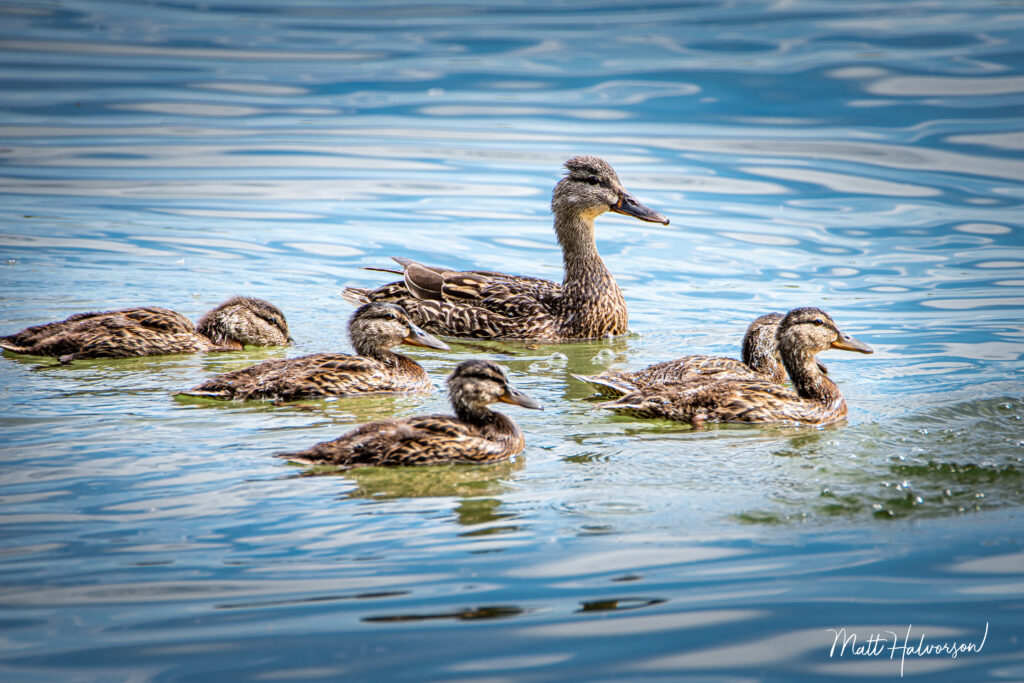
Purchase prints: All God’s creatures great and small collection
Shot with my Nikon D810 and a Tamron 150-600mm lens
Final Thoughts
Lake Lida gave me more than just photographs—it gave me a deeper understanding of waterfowl behavior and renewed respect for the complexity of wildlife photography. Every species presented unique challenges that pushed me to adapt both technically and creatively.
For photographers looking to improve their waterfowl skills, I can’t recommend Lake Lida highly enough. The diversity of species, accessibility, and pristine conditions make it an ideal location for both learning and creating compelling wildlife images.
Most importantly, this experience reminded me why I love wildlife photography: those unexpected moments when an animal reveals something special, and you’re ready to capture it.

Shot with my Nikon D810 and a Tamron 150-600mm lens
Please respect wildlife and maintain appropriate distances when photographing.
